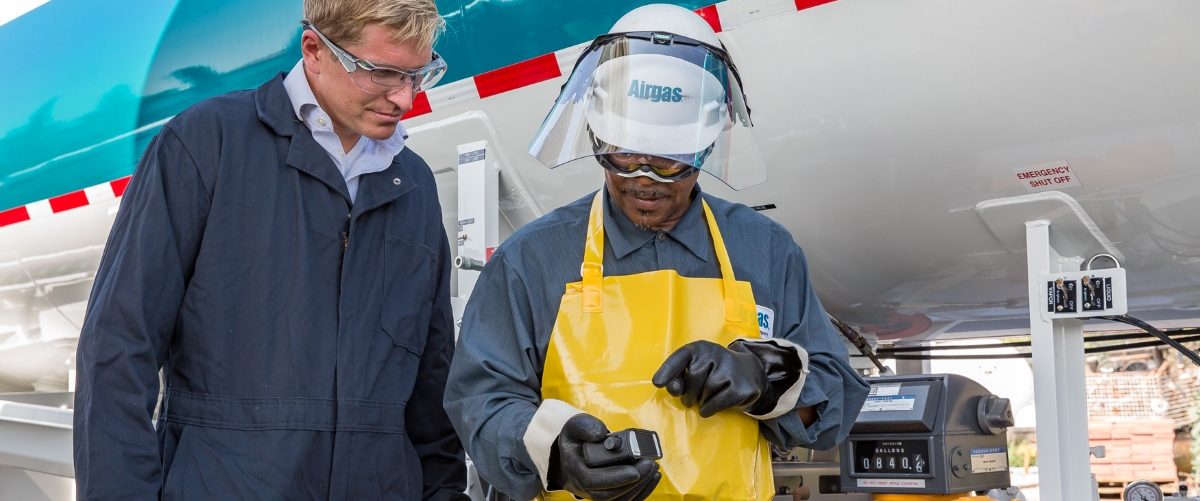Anhydrous Ammonia Uses
Everything you need to know about Anhydrous Ammonia
Anhydrous Ammonia Uses
Unlike household ammonia-based cleaning products, anhydrous ammonia, or NH3, (the name means ammonia without water) is over 99-percent ammonia—about as close to pure ammonia as you can get.
It’s a colorless chemical with a strong, nearly unbreathable odor made up of nitrogen and hydrogen that can come in both gas and liquid form. It boils at negative 28 degrees Fahrenheit and is nonflammable.
Anhydrous ammonia quickly combines with water upon contact. Especially when combined with moisture, ammonia reacts with and corrodes copper, zinc and a number of alloys.
As a Fertilizer
Anhydrous ammonia is one of the most commonly used fertilizers (in fact, 87 percent of all anhydrous ammonia is used as fertilizer) because it is one of the most efficient nitrogen delivery systems for plant growth. It’s often used to increase the yield of corn crops.
It’s also appealing to use because the application process is easy. When the vapors are released (through an injection system about six to eight inches beneath the soil), they move naturally downward into the ground and combine quickly with the water in the soil upon contact. This initiates a process that converts the ammonia into a gas that feeds its nitrates into the soil.
While anhydrous ammonia is easy to obtain, it isn’t the easiest fertilizer to store. It must be kept as a liquid, under high pressure at negative 33 degrees Celsius, with specialized, regularly maintained equipment. It also requires special training to handle.
Diluted as a Cleaner
Anhydrous ammonia can be diluted in water to create ammonium hydroxide, which has many industrial purposes we have written about more extensively here. The most common use for ammonium hydroxide is as a household cleaner.
Because ammonia evaporates quickly and leaves few streaks, it’s frequently used to clean clear and reflective surfaces like glass and stainless steel. It also has a strong ability to break down grime, fats and oils and is a popular choice in kitchen environments.
Most household cleaning ammonia only contains somewhere between five and 10-percent ammonia, as opposed to anhydrous ammonia’s base state of near 99-percent ammonia.
As a Refrigerant Recirculating Fluid
Anhydrous ammonia can be used as a refrigerant recirculating fluid in liquid form. As part of the refrigerating system, it is kept in closed, pressurized containers. In order to create cooling, the pressurized containers release the anhydrous ammonia into a series of tubes where it quickly evaporates and becomes vapor or gas. It then drops temperature until it reaches its boiling point (negative 28 degrees Fahrenheit), which creates the cooling effect utilized by the refrigerator.
To be of refrigerant grade, the purity of anhydrous ammonia is a primary concern. It must be at minimum 99.95-percent pure ammonia or the refrigeration system will fail. Meanwhile, the water content cannot be above 33 parts per million (ppm), and the oil cannot be above 2 ppm.
Ammonium Nitrate Production
Ammonium nitrate is the result of the violent, explosive exothermic reaction between anhydrous ammonium and concentrated nitric acid. Anhydrous ammonia is a starting material in the production of ammonium nitrate, which has many applications:
- ANFO fuel—a combination of 94-percent ammonium nitrate and 6-percent fuel oil. This particular variety of fuel can be used as an explosive with a high water resistance, oxygen balance and detonation velocity while also performing in a small blast zone, making it ideal for all sorts of mining applications.
- Fertilizer with less nitrogen loss than other varieties, making for easier transportation.
- Instant cold packs.
Jewelry and Other Production Machinery
Many soldering machines used in the manufacturing of jewelry require anhydrous ammonia to function. Because anhydrous ammonia is 75-percent hydrogen and 25-percent nitrogen, jewelry manufacturers are able to use a machine called a “disassociator” to separate or “crack” the anhydrous ammonia into its core two components of hydrogen gas and nitrogen gas.
Once the hydrogen and nitrogen gasses are obtained, they’re funneled into an airtight, atmosphere-free kiln for soldering and bright annealing, where the hydrogen eliminates any oxygen remaining within the precious metals inside the furnace.
Water Ammoniation
Anhydrous ammonia can be used for ammoniation while cleaning a water supply and is typically added after the water has been disinfected and dechlorinated.
Airgas Specialty Products Can Answer Your Questions
Airgas Specialty Products is the premier ammonia supplier in North America. We’re the industry leader in product safety and regulation, customer service, and efficient delivery schedules. Every single one of our products is guaranteed to meet or exceed industry standards.
Contact us with any questions about anhydrous ammonia or to request a quote.

